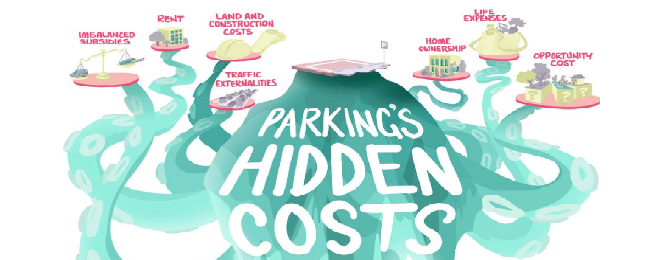Melbourne seems set to join other leading world cities and dial back car parking, freeing street space for more important tasks.
Car parking is on the nose everywhere among that cities are booming economically and culturally.
It is being swept from streets and alleys and replaced by bike lanes, wider footpaths and other urban enhancements that draw people and commerce to city centres.
The moves are foreshadowed in the latest proposals for the City of Melbourne’s next Transport Strategy, due later this year.
The City today released two documents: an easy-to-read car parking discussion paper; and a detailed car parking background paper.
The papers clearly show how car parking has become and major hinderance to economic growth and liveability.
In recent years the roll-out of critically important bike infrastructure across Melbourne has been repeatedly hindered by 1960's belief that copious car parking was needed for cities to function. This fabrication is now being challenged .
The council's reports show that car parking occupies a staggering 460 hectares in the City of Melbourne, the same amount of space as 3.6 Hoddle Grids. It is the equivalent of 12 per cent of all floor space within the city.
There are 217,090 spaces in the City, including off-street. Average occupancy of on-street parking is just 43 per cent.
The figures are even more ridiculous for apartment parking. Between 26 per cent and 41 per cent of apartment parking is vacant or unused.
There are 40 per cent more residential parking spaces in Melbourne than there are privately owned vehicles.
More than $700 million dollars has been wasted by home owners and renters paying for 13,000 empty off-street car spaces.
Planning for tomorrow
The City says that to protect Melbourne’s liveability for future generations, it needs greener, people friendly streets.
“Underused parking spaces should continue to be converted to other uses, but at a faster rate."
“Higher value uses of street space include more trees, wider footpaths, improved tram stops and on-street dining areas."
“The large amount of space dedicated to on-street parking provides a significant opportunity to increase tree canopy cover and mitigate climate change impacts."
"Since 2011, there has been a 22 per cent reduction in parking spaces in the central city due to street improvements such as tree planting, wider footpaths, bike lanes and new tram stops."
"This trend will continue and accelerate. New revenue streams will need to be found to deliver essential city services.”
The parking background paper makes the following recommendations:
- Make a clear statement of parking strategy and hierarchies in relation to transport and land use goals
- Place a clear value on parking on-street space as public space
- Make on-street parking spaces available for different uses and users, based on clear values and guidelines
- Trial and monitor methods for converting more on-street parking space to public open space
- Introduce simple or trial versions of occupancy targets and dynamic pricing
- Gradually reduce reliance on on-street residential parking permits
- Free up ways to make better use of excess apartment parking
- Reduce barriers to the re-use of off-street parking space for retail, housing and end-of-trip purposes
- Facilitate local parking policies and initiatives that build shared understanding with the community
- Improve the congestion levy and its transparency – as well as of other parking-based revenue
- Prepare for future disruptions with fairer policies now: charge for street use not just parking
- Extend parking data collection and coordination
- Take on an evidence and advocacy role with other municipalities


